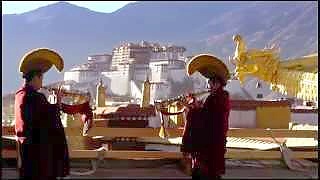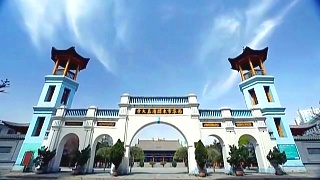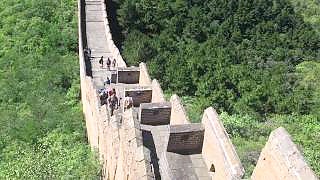Weather Summary for Selected Cities in China:
Beijing:
Spring: Daytime temperatures: 11°C to 24°C, Nighttime temperatures: 2°C to 13°C.
Spring in Beijing is generally mild and dry, with occasional sandstorms in March and April.
Summer: Daytime temperatures: 29°C to 31°C, Nighttime temperatures: 17°C to 24°C.
Beijing summers are hot and humid, with frequent thunderstorms and occasional heatwaves.
Autumn: Daytime temperatures: 18°C to 26°C, Nighttime temperatures: 7°C to 15°C.
Autumn is considered the best time to visit Beijing, with clear skies, comfortable temperatures, and colorful foliage.
Winter: Daytime temperatures: 2°C to 5°C, Nighttime temperatures: -9°C to -1°C.
Beijing winters are cold and dry, with occasional snowfall and freezing temperatures.
Shanghai:
Spring: Daytime temperatures: 15°C to 24°C, Nighttime temperatures: 8°C to 16°C.
Spring in Shanghai is mild and humid, with occasional rain showers and rapid temperature changes.
Summer: Daytime temperatures: 26°C to 32°C, Nighttime temperatures: 20°C to 26°C.
Shanghai summers are hot and humid, with frequent rainfall and occasional typhoons.
Autumn: Daytime temperatures: 23°C to 28°C, Nighttime temperatures: 16°C to 22°C.
Autumn is relatively comfortable in Shanghai, with mild temperatures and clear skies.
Winter: Daytime temperatures: 8°C to 12°C, Nighttime temperatures: 1°C to 6°C.
Shanghai winters are cool and damp, with occasional cold snaps and drizzly weather.
Hong Kong:
Spring: Daytime temperatures: 23°C to 28°C, Nighttime temperatures: 19°C to 23°C.
Spring in Hong Kong is warm and humid, with occasional fog and showers.
Summer: Daytime temperatures: 29°C to 32°C, Nighttime temperatures: 25°C to 28°C.
Hong Kong summers are hot, humid, and rainy, with frequent thunderstorms and occasional typhoons.
Autumn: Daytime temperatures: 27°C to 29°C, Nighttime temperatures: 23°C to 25°C.
Autumn is considered the best time to visit Hong Kong, with comfortable temperatures and lower humidity levels.
Winter: Daytime temperatures: 18°C to 20°C, Nighttime temperatures: 14°C to 18°C.
Hong Kong winters are mild and dry, with occasional cold fronts bringing cooler temperatures.
Chengdu:
Spring: Daytime temperatures: 16°C to 22°C, Nighttime temperatures: 9°C to 15°C.
Spring in Chengdu is mild and humid, with occasional rain showers and blooming flowers.
Summer: Daytime temperatures: 26°C to 29°C, Nighttime temperatures: 18°C to 21°C.
Chengdu summers are warm and humid, with frequent rainfall and occasional heatwaves.
Autumn: Daytime temperatures: 19°C to 24°C, Nighttime temperatures: 12°C to 16°C.
Autumn is considered the best time to visit Chengdu, with comfortable temperatures and clear skies.
Winter: Daytime temperatures: 9°C to 12°C, Nighttime temperatures: 3°C to 6°C.
Chengdu winters are cool and damp, with occasional fog and drizzle.
Guilin:
Spring: Daytime temperatures: 20°C to 26°C, Nighttime temperatures: 13°C to 18°C.
Spring in Guilin is warm and humid, with occasional rain showers and blooming flowers.
Summer: Daytime temperatures: 29°C to 33°C, Nighttime temperatures: 21°C to 24°C.
Guilin summers are hot and humid, with frequent rainfall and occasional heatwaves.
Autumn: Daytime temperatures: 24°C to 28°C, Nighttime temperatures: 17°C to 20°C.
Autumn is relatively comfortable in Guilin, with mild temperatures and clear skies.
Winter: Daytime temperatures: 11°C to 14°C, Nighttime temperatures: 6°C to 9°C.
Guilin winters are cool and damp, with occasional fog and drizzle.
 Weather by season across China
Weather by season across China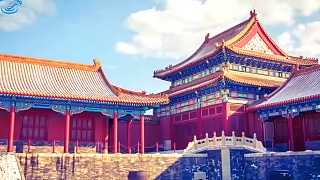

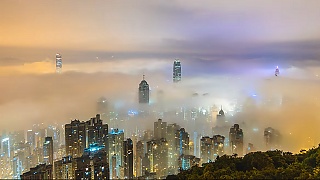
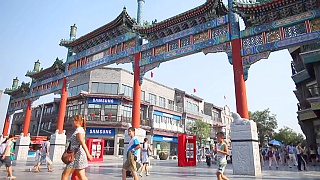
![With Time Walker . . . `Shenzhen Library North is one of the first major cultural facilities of the new era built and completed in Shenzhen. It has a construction area of about 72,000 square meters, 6 floors above ground and 3 floors underground. It is designed to hold 8 million books and provide 2,500 seats. Its total investment is about 1. 2 billion yuan. The library is positioned as a large-scale comprehensive and intelligent library integrating document collection, national reading, social education, ideological exchange, cultural inheritance and creative creation. It not only has the functions of a public library, but also serves as the city`s document adjustment library and Shenzhen`s `City of Libraries` joint editing center, network data center and document allocation center. The library has many special libraries and interactive learning spaces, and has the largest underground intelligent three-dimensional library in the country, equipped with advanced facilities such as large-scale rapid sorting system, vertical track access system and electronic seeding wall system. As of July 2024, Shenzhen Library North was officially opened on December 28, 2023. After the opening, 6,000 reservations will be available in the public service area and 2,000 reservations will be available in the children`s area every day. Readers can submit a reservation for admission through the Shenzhen Library WeChat official account one day in advance, and present the reservation voucher to enter the venue after arriving at the library. The specific opening hours are from Tuesday to Sunday 9:00-21:00. The housekeeping is done on Mondays. The 1F Reading Hall is open from Monday to Sunday 7:00-23:00. Legal holidays will be notified separately. Location: Located at the intersection of Tenglong Road and Zhongmei Road in Longhua District. Transportation: • Subway: Take Line 4 or Line 6 to Hongshan Station and walk to the library in a few minutes. • Bus: There are many bus lines stopping nearby, such as [specify the specific bus number and stop]. Architectural Features: The exterior adopts a unique design similar to white fish scales, creating a visually stunning effect. The interior space is spacious, with a large atrium and elegant book walls. Opening hours: Open from 9:00 to 21:00 from Tuesday to Sunday. The 1F reading room is open from 7:00 to 23:00. Collection Features: The collection is rich and covers various fields and genres. There are rare and precious books, as well as newly published books to meet different interests. Exhibition Features: Regularly hold a variety of exhibitions, including art exhibitions, historical displays and cultural exhibitions, providing a rich visual and intellectual experience. When you visit: • Remember to make an appointment in advance through the Shenzhen Library WeChat official account. • Take your time to explore each floor and enjoy the peaceful reading atmosphere. ` The awesome ShenZhen Library North Branch](https://img.youtube.com/vi/4jP97cIHKUc/mqdefault.jpg)













